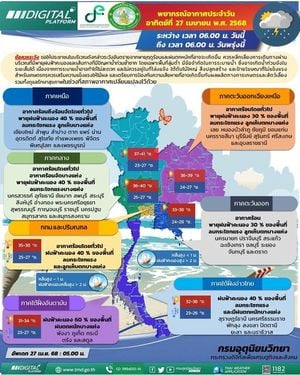On April 26, 2025, significant administrative changes were set in motion across several provinces in Vietnam, marking a pivotal moment in local governance. In a series of meetings and resolutions, the provincial authorities of Quang Nam, Yen Bai, Thanh Hoa, and Da Nang have approved plans for mergers and reorganization of their administrative units, aiming to enhance efficiency and governance.
Starting with Quang Nam, the Provincial Party Committee issued Instruction No. 07, which outlines the personnel plans for new commune-level committees. This instruction mandates district-level committees to propose personnel plans for key leadership positions at the commune level to the Provincial Party Committee by May 31, 2025. The directive emphasizes the importance of leadership and direction from the Provincial Party Committee in building these personnel plans, ensuring that the selection process is thorough and transparent.
According to Instruction No. 07, the selection criteria for these positions will prioritize political qualities, ethics, leadership skills, and innovation. Notably, the instruction prohibits the promotion of officials who have faced disciplinary actions or are currently under investigation. The Provincial Party Committee may consider assigning members or directors of departments to key positions such as Party Secretaries, particularly in special cases where the local party unit is significant in terms of economic scale and infrastructure.
On the same day, Yen Bai Province's People's Council held a special session and approved a plan to merge with Lao Cai Province, creating a new administrative entity named Lao Cai. This new province will cover a total area of 13,256.92 km² and will have a population of approximately 1,778,785 residents. The administrative center will be based in Yen Bai City, and the merger will reduce the number of commune-level administrative units from 168 to 51, achieving a 69.64% reduction.
During the session, the council also dismissed five members of the Provincial People's Committee and elected two new members, highlighting a shift in leadership as the provinces prepare for this substantial change. The council emphasized the importance of these resolutions as a legal foundation for the government to address emerging issues and enhance socio-economic development.
Meanwhile, in Thanh Hoa Province, local authorities held urgent meetings on April 27 to discuss the naming of newly organized communes, deciding to abandon a previously proposed numbering system. In Hoang Hoa District, leaders unanimously agreed to use historical and traditional names for the new administrative units instead of numerical designations. Proposed names for the eight new communes include Hoang Hoa, Hoang Tien, and Hoang Thanh, reflecting the region's rich cultural heritage.
These discussions come on the heels of a prior proposal that faced public dissent, as many residents favored names that resonate with local history rather than a mere numbering scheme. The urgency of these meetings reflects the local government's commitment to incorporating public opinion into administrative decisions.
In Nghi Son Town, the Standing Committee of the Town Party also agreed to seek public feedback on new names, moving away from the numbering system. The proposed restructuring includes merging several communes into new wards, such as merging four communes into Ngoc Son Ward and three into Tan Dan Ward.
On April 26, the Deputy Secretary of the Thanh Hoa Provincial Party Committee issued a directive requiring all localities to finalize the names of the new communes and submit their proposals to the Provincial People's Council by April 28. This timeline underscores the urgency of the administrative reorganization process, which aims to streamline governance and enhance local service delivery.
In Da Nang, the City People's Council approved a plan to merge with Quang Nam Province, focusing on efficient management of existing office buildings and resources. A total of 4,291 office facilities were reviewed, with plans to centralize provincial-level departments in the Da Nang City Administrative Center. This merger aims to optimize the use of resources and ensure that local governments can respond effectively to residents' needs.
The plan also proposes converting surplus office buildings into schools, medical facilities, and community spaces, which can better serve the population's needs. Currently, there are 132 surplus office buildings identified, with a significant portion located in Quang Nam.
Furthermore, the total number of official vehicles across both regions stands at 760, with plans for reallocation based on the roles and responsibilities of officials. The Da Nang Department of Finance will develop new standards for vehicle usage in line with upcoming government regulations.
These developments across Quang Nam, Yen Bai, Thanh Hoa, and Da Nang reflect a broader trend in Vietnam towards administrative consolidation and efficiency. As local governments adapt to these changes, the emphasis on public input and effective leadership remains paramount. The success of these initiatives will depend on how well local authorities can manage the transition and address the concerns of their constituents.
In summary, as Vietnam embarks on this significant restructuring of its administrative landscape, the focus on innovation, public engagement, and effective governance will be crucial in shaping the future of local administration.




